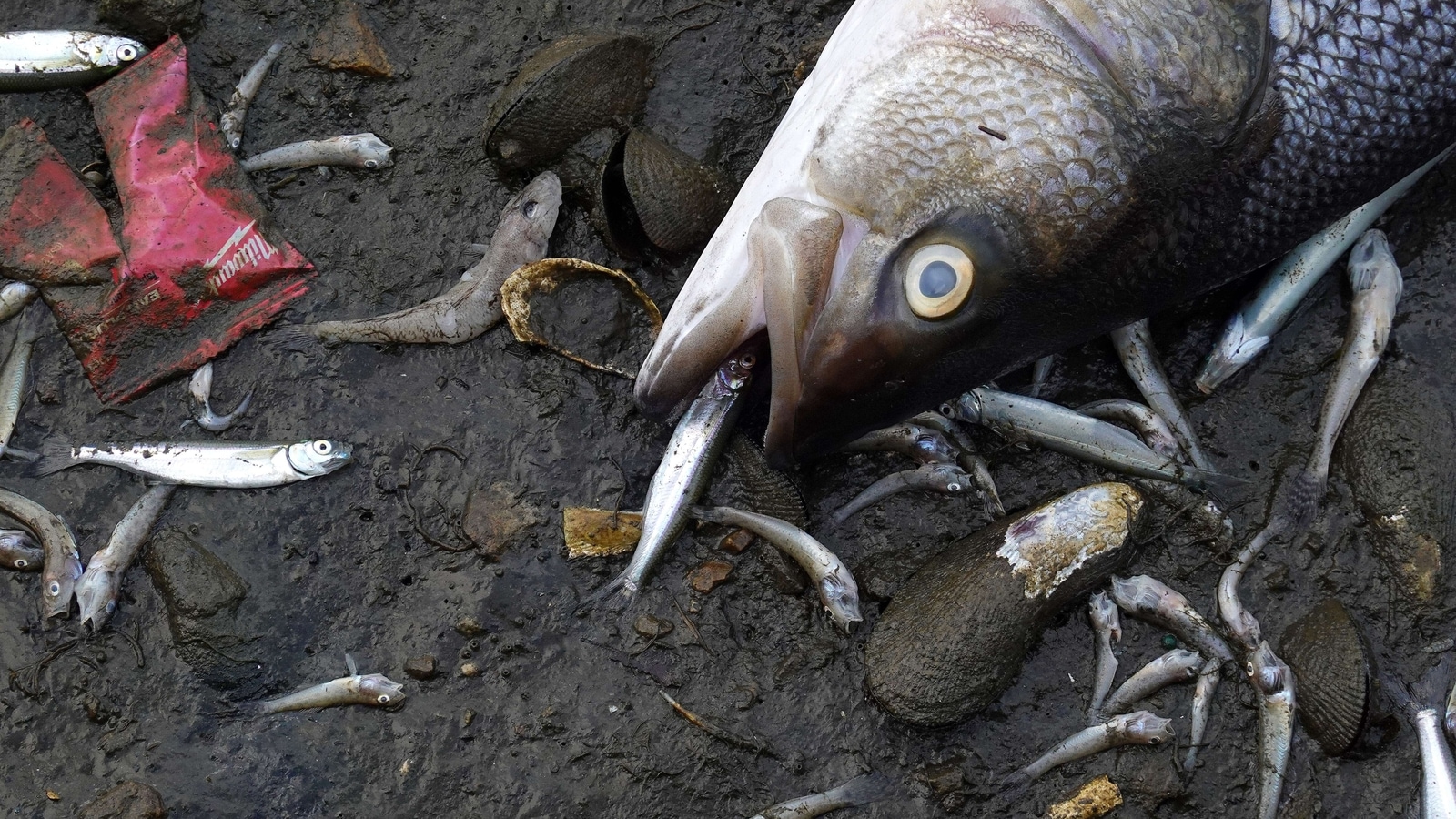Combating The Killer Seaweed: Protecting Australia's Marine Biodiversity

Table of Contents
Identifying the Invasive Seaweed Threat
Species Identification and Distribution
Several invasive seaweed species are wreaking havoc on Australian waters. Two notable examples are Caulerpa taxifolia, known for its rapid growth and ability to displace native seagrasses, and Undaria pinnatifida, a brown alga that forms dense mats, smothering other organisms.
- Caulerpa taxifolia: Primarily found along the south-eastern coast of Australia, particularly in sheltered bays and estuaries. It's characterized by bright green, feathery fronds and rapid vegetative reproduction.
- Undaria pinnatifida: Widely distributed along the south-eastern and south-western coasts of Australia, often found attached to hard substrates such as rocks and artificial structures. It's identified by its large, brown, blade-like fronds.
Scientific monitoring and early detection programs, such as the national surveillance efforts coordinated by various government agencies, are crucial for tracking the spread of these invasive seaweeds and implementing timely control measures. Early detection allows for more effective and less costly eradication efforts.
The Ecological Impact of Invasive Seaweed
Invasive seaweed disrupts the delicate balance of marine ecosystems with far-reaching consequences:
- Habitat destruction: Dense mats of invasive seaweed can smother seagrass beds and coral reefs, destroying vital habitats for numerous marine species.
- Reduced biodiversity: Invasive seaweeds outcompete native algae and seagrasses, leading to a decline in native plant diversity and a ripple effect throughout the food web.
- Impact on native species: The displacement of native species impacts fish populations who rely on native algae for food and shelter, affecting fisheries and the broader ecosystem. Invertebrates also suffer habitat loss and reduced food availability.
- Changes in water quality: Decomposing seaweed can deplete oxygen levels in the water, creating "dead zones" unsuitable for many marine organisms.
The economic impact is significant, with damage to fisheries, reduced tourism revenue from degraded marine environments, and increased costs associated with control and management efforts. Estimates of economic losses due to invasive seaweed are difficult to quantify precisely, but they represent a substantial burden on the Australian economy.
Strategies for Combating Invasive Seaweed
Various strategies are employed to combat the spread of killer seaweed, each with its own strengths and limitations:
Mechanical Removal Techniques
Physical methods aim to remove or contain the seaweed, but their effectiveness is often limited by the scale of the infestation and the difficulty of accessing affected areas.
- Dredging: Suitable for removing seaweed from large areas, but it can be disruptive to the seabed and potentially damage surrounding habitats.
- Hand-pulling: Effective for small infestations, but labor-intensive and impractical for large-scale invasions.
- Cutting: Can be used to reduce the biomass of seaweed, but regrowth is often rapid unless combined with other control methods.
Environmental considerations are paramount; mechanical removal should be carefully planned to minimize damage to native species and habitats.
Chemical Control Methods
Chemical treatments, such as herbicides, can effectively kill invasive seaweed but pose risks to the surrounding marine environment.
- Specific herbicides registered for aquatic use may be applied, but their effectiveness varies depending on the species of seaweed and environmental conditions.
- Efficacy rates are not always 100%, and repeated applications may be needed.
- Potential risks to non-target marine organisms, including fish, invertebrates, and other algae, require careful assessment and mitigation strategies.
- Research is ongoing into the development of more environmentally friendly and species-specific chemical controls.
Biological Control Methods
Introducing natural predators or competitors is a more sustainable approach, but it requires extensive research and careful risk assessment.
- Introducing herbivorous fish or invertebrates that specifically feed on the invasive seaweed is being investigated.
- Successful implementation of biological control requires a thorough understanding of the target species' biology, ecology, and potential interactions with other organisms in the ecosystem.
- The risk of unintended ecological consequences must be carefully evaluated before introducing any non-native species.
The Role of Community Engagement and Government Initiatives
Combating killer seaweed requires a concerted effort involving the public and government agencies:
Public Awareness Campaigns
Educating the public about invasive seaweed is crucial to prevent its further spread and encourage responsible actions.
- Successful public awareness campaigns utilize educational materials, media outreach, and community involvement programs.
- Citizen science initiatives, where members of the public can report sightings of invasive seaweed, are crucial for early detection and rapid response.
Government Policies and Regulations
Government agencies play a key role in managing and controlling invasive seaweed through:
- Funding research into effective control methods and monitoring programs.
- Implementing regulations to prevent the introduction and spread of invasive species (e.g., biosecurity measures for boat hulls).
- Coordinating control efforts across different jurisdictions and stakeholders.
Successful government initiatives involve collaboration with researchers, local communities, and other stakeholders to create effective and comprehensive strategies.
Conclusion
Invasive "killer seaweed" poses a significant threat to Australia's marine biodiversity and requires a multifaceted approach to control its spread. The strategies discussed – mechanical, chemical, and biological control, alongside robust community engagement and government initiatives – are crucial for protecting our precious marine ecosystems.
We must continue to invest in research, implement effective management strategies, and raise public awareness to combat this growing threat. Learn more about invasive seaweed in Australia, participate in citizen science initiatives, support relevant organizations, and report any sightings to help protect our marine environment. Together, we can combat killer seaweed and safeguard Australia's unique and valuable marine ecosystems.

Featured Posts
-
 Undertales 10th Anniversary A One Night Only Orchestral Concert
May 30, 2025
Undertales 10th Anniversary A One Night Only Orchestral Concert
May 30, 2025 -
 Plires Programma Tileorasis Gia Kyriaki 4 And 5 Maioy
May 30, 2025
Plires Programma Tileorasis Gia Kyriaki 4 And 5 Maioy
May 30, 2025 -
 Gouweleeuws Toekomst Bij Fc Augsburg Een Nieuwe Trainer
May 30, 2025
Gouweleeuws Toekomst Bij Fc Augsburg Een Nieuwe Trainer
May 30, 2025 -
 California Coast Algae Bloom Impacts On Marine Ecosystems
May 30, 2025
California Coast Algae Bloom Impacts On Marine Ecosystems
May 30, 2025 -
 Metadoseis Savvatoy 15 Martioy Olokliromenos Odigos
May 30, 2025
Metadoseis Savvatoy 15 Martioy Olokliromenos Odigos
May 30, 2025
